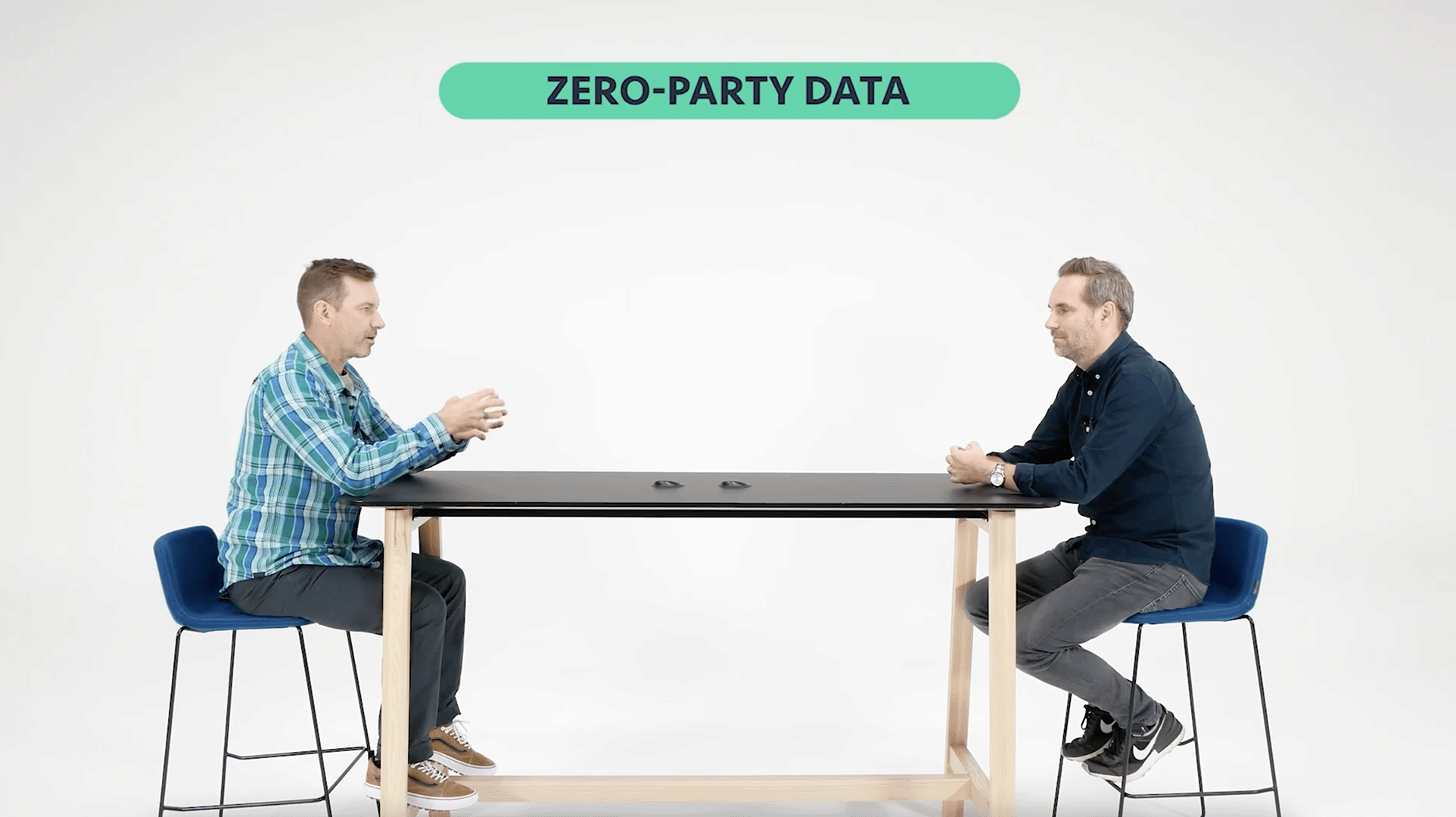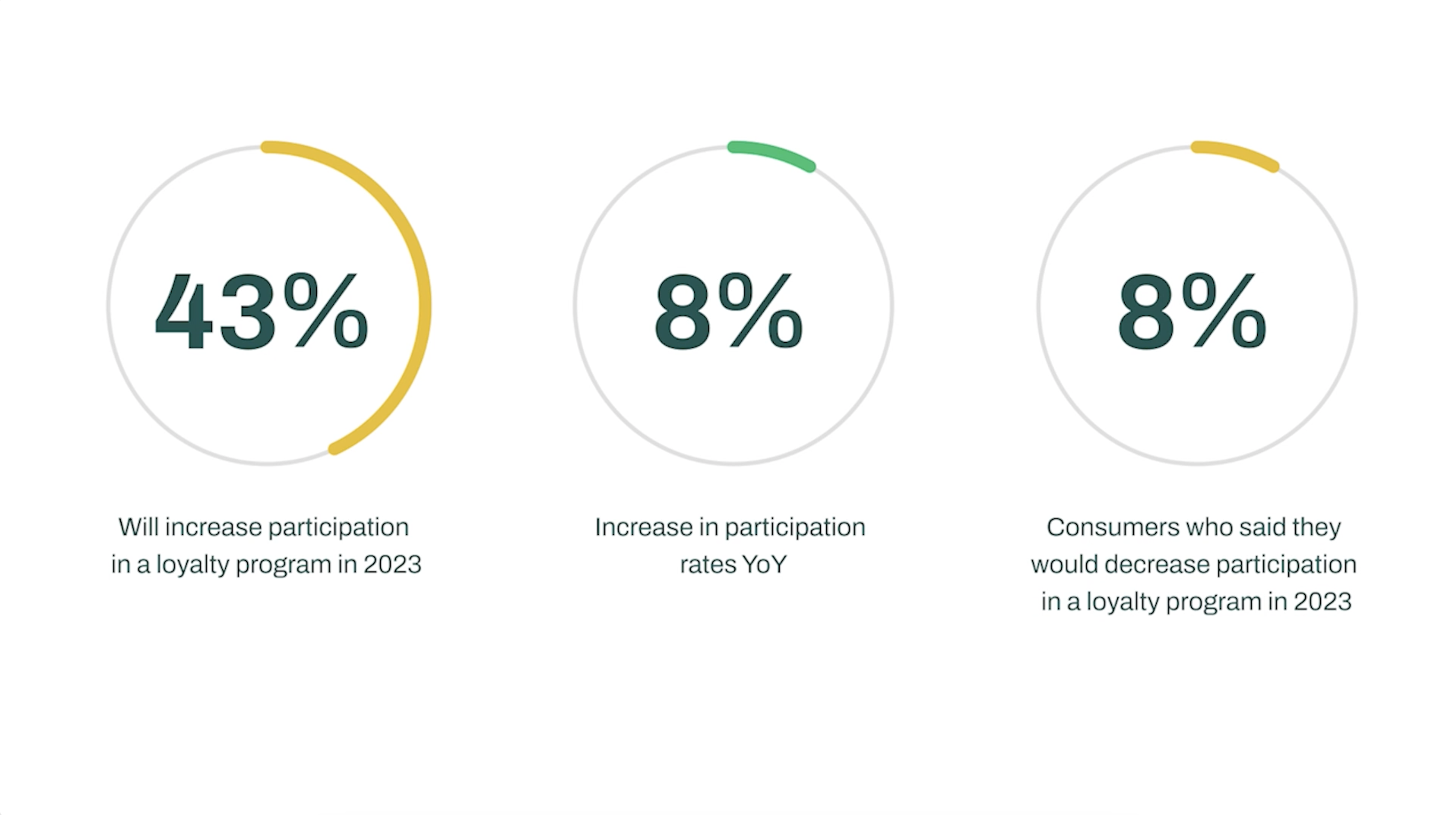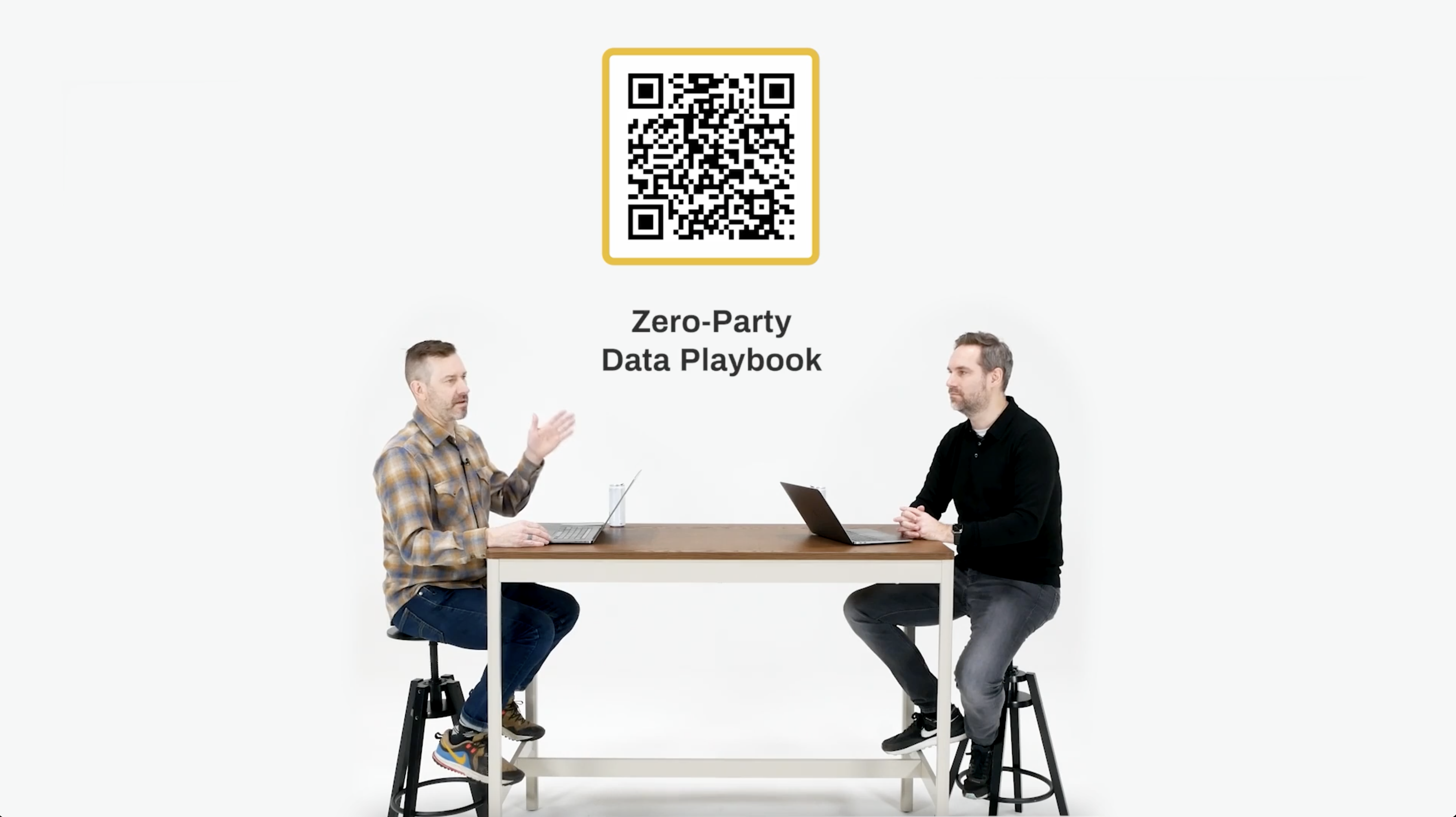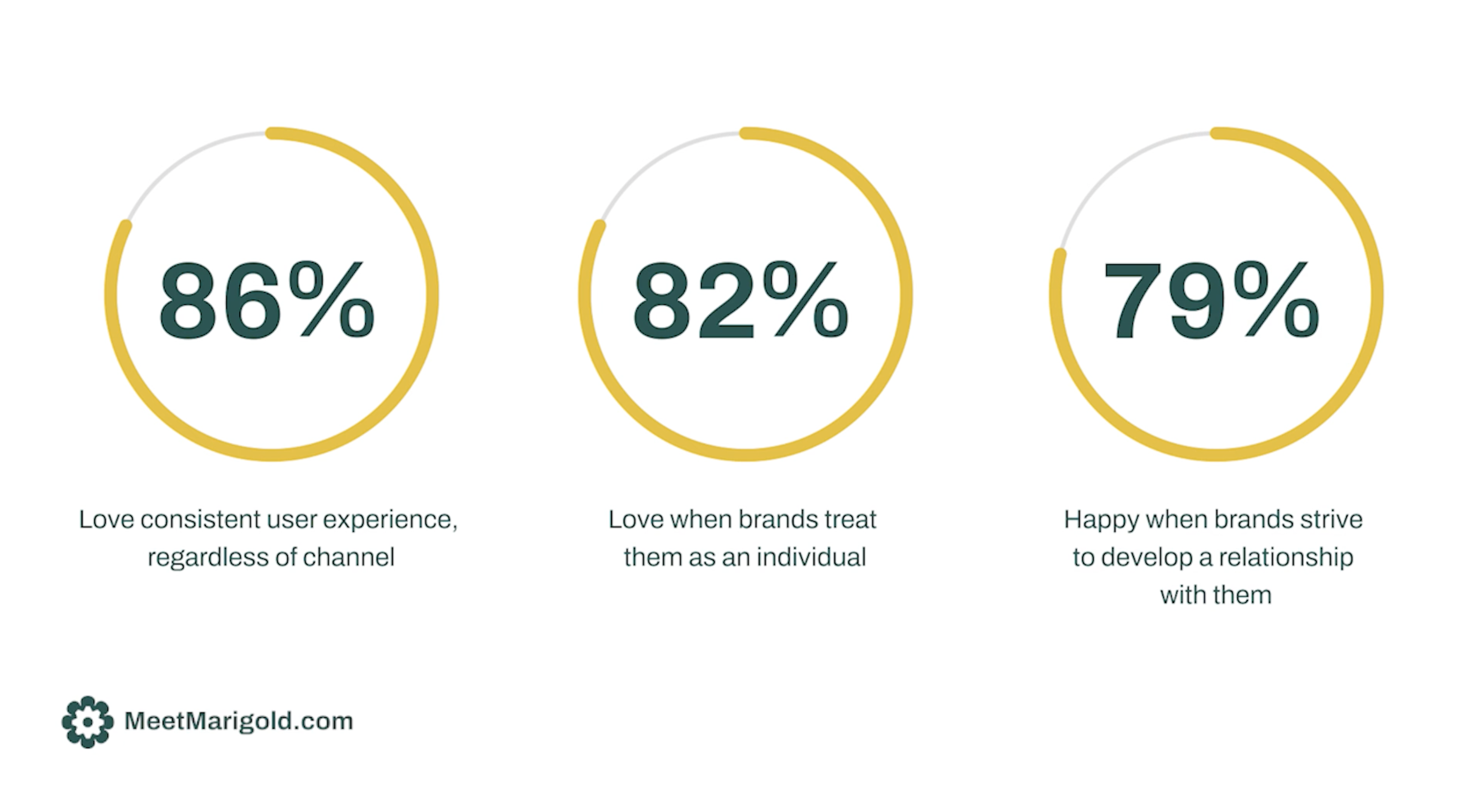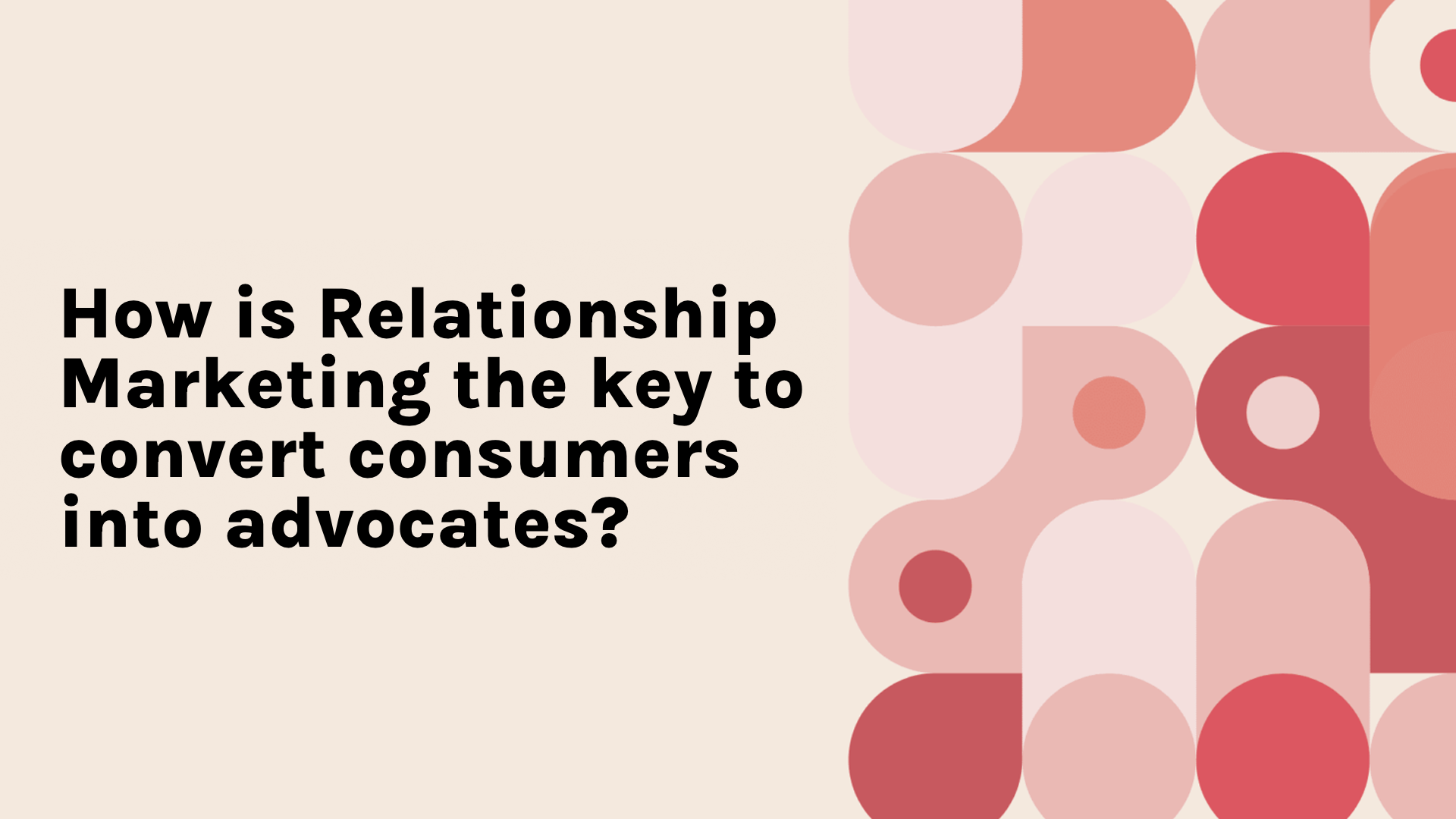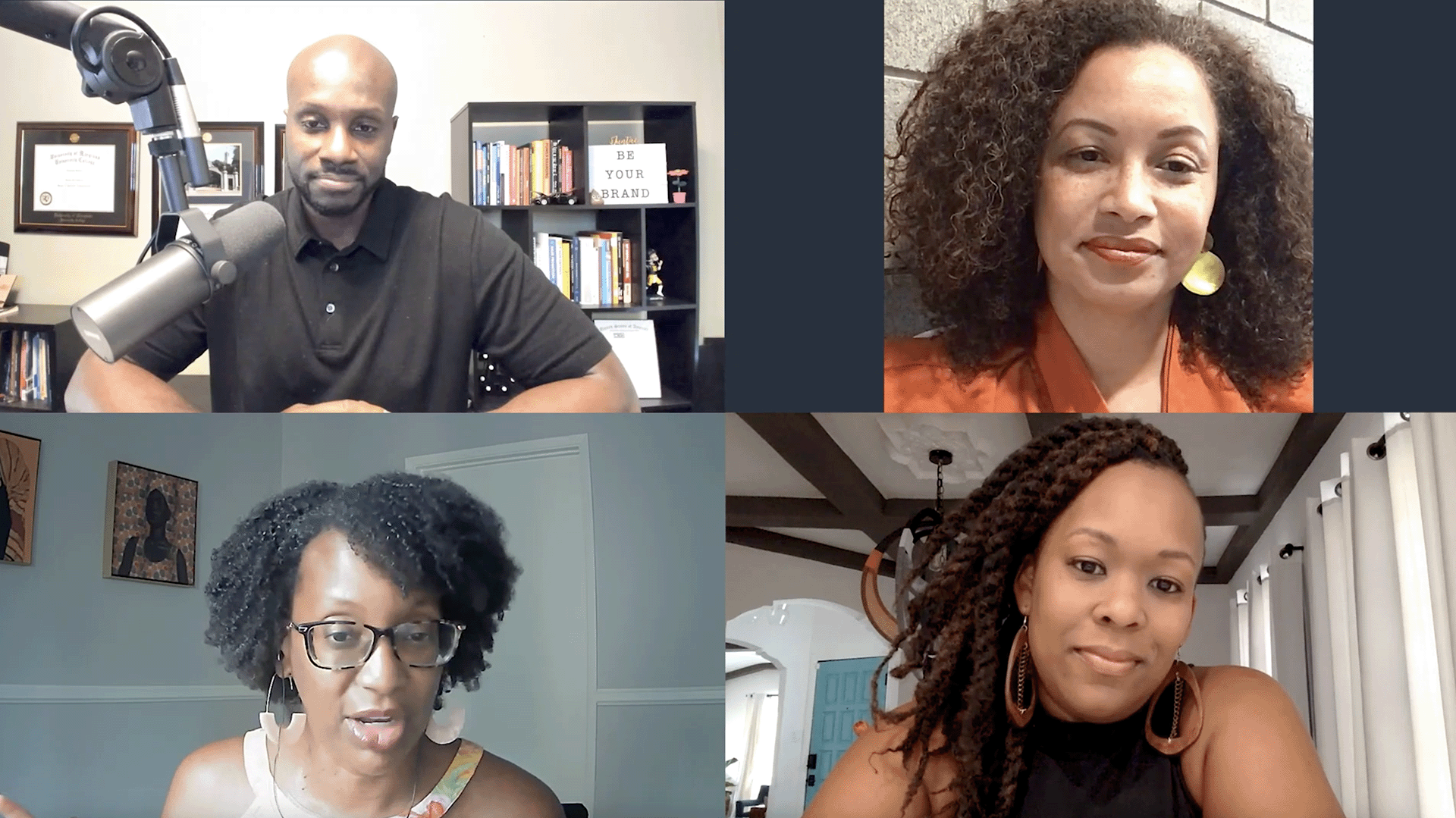Zero-Party Data: The What, Why and How to Use it Effectively
- 0.5
- 1
- 1.25
- 1.5
- 1.75
- 2
Tim: Nick, you're here. This is honestly going to be one of my favorite sessions that I do this year. You and I are both incredibly passionate people around zero- party data, value exchange and our Experiences platform. Thanks for meeting me here in our London studio, How you been?
Nick: I'm good. Thanks for having me. It's lovely to see you over here in the UK. It's been a while.
Tim: Yeah, it has been a while. Well, let's set the stage for everyone who might be watching right now. We're going to talk about value exchange, zero- party data, et cetera, but can you explain your role and then give us a 60- second overview. What is the Experiences platform? What does it offer from a digital experience?
Nick: Sure. I am a VP of Client Success in North Europe, but prior to being in that role and I work across all the platforms at Cheetah, I was really focusing particularly on the Experiences platform. And the platform itself is absolutely a SaaS platform for a non- technical marketer to go and find a whole suite of 80, 90 of these different experience templates to collect data. So we're talking about first- party data, PII data opt- ins, and importantly, this concept of zero- party data as well. So we've got a whole host of these different mechanics. So it might be a simple sweepstakes, it might be a photo contest, a poll, a product, recommend a tool, a product selector. And the idea is you can create these experiences quickly and easily. We create a brand theme and then you can publish them into your website, embedded inside your app, inside an ad anywhere that you actually want to, that could be a good digital destination. And then from that, the consumer engages, they give up their data and then we'll pass that data through into your CRM tool, your CDP, your data link, wherever else it needs to go for you to take action with that data.
Tim: Yeah, great overview. I love the platform. I've been a fan of the platform. I was actually a client. So today you're going to hear some empathy from me. For people like you watching, I actually built an agency on the back of the Experiences platform and served a lot of small-, medium- sized businesses. So I also want to get out there: we're going to be talking a lot about zero- party data. If you're not completely sure what zero- party data is, we have other resources, you have to go look at it. Here at the CM Group and across all of our products, zero- party data is really the rocket fuel for personalization, for customer engagement. And honestly, it's the foundation layer for relationship marketing. So again, go look at what zero- party data is explicitly declared, opted- in data from consumers directly to a brand. It's not bartered, bought or sold from a third party like Google or Facebook. It's truly communicated to you. With that said, let's explain what a value exchange is first, because it's really this you got to give to get mentality. Can you just give us an overview of how you see value exchange?
Nick: Yeah, of course. I mean the value exchange can come in many different guises, but the concept is look, if you want to have a consumer, and we're talking about a prospective customer or an existing customer, and if you want them to interact and engage with an experience that you've created and more importantly give you some data, you have to give something in exchange, some value in exchange ultimately. And so this can come in different formats. As I say, this could be as simple as some sort of giveaway, whether it's related to your product, whether it's actual product that you're giving away or related offer or something similar. It could be a coupon, it could be personalized content, it could be a personalized recommendation. But the idea is why would someone want to interact, engage and give up their data because you're going to give them something in return. And definitely across the whole relationship that you have, you can change what that value exchange is and you can consider what you need to give in terms of what value you need to offer in exchange for what you are asking for from the consumer as well.
Tim: Yeah, and look, we're going to talk about examples. I don't care if you are a single pizza place and you just have one operation or you're as large as some of our enterprise clients at CM, Starbucks, American Airlines, we're going to give you prime examples. And when we talk about data, don't think that you already have data. I already have their demographic, I have their name, I have their information. A big part of what we're going to talk about is psychographic data. The data you can't glean or shouldn't infer from say web behavior or transaction. It literally is, " Tim, do you care about the beach or the mountains? Would you rather go biking or hiking?" It's things that you can't infer. Now that we've established those factors. I want to put this in the frame of relationship marketing. Relationship marketing really is the idea that you have four stages, regardless of your brand, regardless of your industry, four stages you and your customers must go through. Stage one is simple, it's acquisition. You need to turn unknown consumer into a known contact. They still might not even be a customer, but you got to turn Jane or John Doe into an actual name in your database. Stage two, pretty simple, again. You got to engage them. You got them in your database, email them, SMS them, personalized web experiences for them. Which leads to stage three. Once you really start to build that relationship, much like humans would when you meet each other and ask each other questions, you can now personalize. " Hey Nick, if you tell me you're a carnivore, I'm probably not going to invite you to my vegetarian meal this Sunday." The fourth and final stage, which is critical and crucial is retention and loyalty, right? Once you have somebody as a customer, whether they're buying once a year, once every four years, or every week, you need to continue that relationship, learn more about them and repeat the cycle. So Nick, I'm going to put you on the spot here. Let's talk about the acquisition stage first. The first stage. How would Experiences benefit a brand when they're trying to turn people from an unknown contact into a known contact?
Nick: If you are trying to acquire someone as a customer, or for example, just as a prospective customer, so into your list for example as well, you've got all of these different touch points, these opportunities that you can try and gather data. So you've got everything from an onsite perspective. Let's just say you've put some good paid advertising behind a campaign and you've managed to get people to your website. You have an opportunity there to convert them to be a customer there and buy your product. But if not to maybe give you their email address and opt into a list, for example. If you are a store and you have people coming to your physical store and they're coming to buy from you, you have an opportunity there to engage them with an opportunity on a point of sale, for example, or the receipt that they get or anything else like that. And you can engage them there and have them connect with you digitally in some way. The QR code has been a perfect example of how to make that more frictionless than it's ever been before. You have all of these plethora of different ways, and the idea is that with the Experiences platform, you have this reason for someone to go ahead and convert. So what you're doing is you are giving them different mechanics and different reasons to compel them to give up that data. So you have this moment and then you can say to them, " Hey, follow this experience. Tell me more about yourself and I'm going to recommend the right product for you. And by the way, give me your email address and opt-in, I'm going to give you 20% off your first purchase." So you have this pathway there. Or, " Hey, you are in the store, you've bought this product." Maybe it could be related to the fact that they'd spent a certain amount or they'd bought a certain product. You say, " Scan this QR code, spin the wheel and get a free chance to get something else on offer or anything else like that." So you have all of these moments in time and these different mechanics that will try and convert someone from unknown to known. And along the way, the idea is when you have that little moment, try and gather an extra little bit of data about them if you can to get to know them a little bit better. So understand a little bit more about them in a way that will then help you to start that and develop that relationship with them.
Tim: Great summation. And I'll bring it into real world. From my experience as a brand marketer, there's one brand in particular where our acquisition costs were high. To your point, we're using advertising, we're using television, we were using print ads, we were using events and they were using in store. It was basically a manufacturer who had 3, 000 dealerships, independent dealerships across North America. And we used all those touch points, direct response and television ads with QR codes and/ or SMS keywords, print ads, the same different QR codes. We were able to actually measure every single ad across social, across social influencers, across print, TV, et cetera, to understand into that value change. It was a giveaway, basically, win this experience just answer three questions. We were able to tell some magazines we traditionally advertise with for years were useless. They couldn't drive actual entries for a free giveaway, let alone hopefully selling our product. So it was very easy for us when we used the Experiences platform and JavaScript and bringing in UTM codes from all these different sources to say, these magazines we no longer advertise with. This one did incredibly well. And not only did maybe one television ad or a social influencer get us a large entry pool, but we learned those are the people or maybe not. Those aren't the people we want to reach because when we ask three strategic questions, we realize that social influencer or that channel, that television show, actually we're getting people that don't care about our products. So it's a great way to measure all of your media, all of your marketing efforts and it's technology, it's all scalable.
Nick: Yeah, there's always an opportunity to try and put in a call to action to gather data. And the idea is that because you can create different experience types and you can clone them and you can tweak them, you can test things. And so you can see, hey, this is working in this particular channel, this isn't working in this particular channel. Let's change things. Let's change the way that we are kind of driving towards the value exchange or we're trying to gather the data. Whether that's through even considering what's the right experience to show to someone based upon what we already know. So for example, if they visit the website and that they've been anonymous before, you could maybe present a different version of an experience to try and convert them through the journey to actually turn unknown to known as well. So you have all of these options. And as you say, most importantly is you are putting a lot of spend into advertising, make that work harder, drive more value from it. There's no reason not to put a call to action on everything these days, no question at all.
Tim: I completely agree with you. In fact, when I was was leading the marketing department at this one brand, I mandated that 10% of all marketing, I don't care if it was dollars, budget or actual inventory we were buying, 10% had to have an inclusion of a call to action that led to an experience where we gathered some data. An example of that would be a print ad. The bottom 10% had to have a line like, " Hey, enter to win this experience." Or if we were doing television buy, 10 to 20% and that buy had to be running spots that were direct response. So these are great ones. I want to talk about next gen experience next spec, next best experience, which we like to talk about in stage three. Let's move to stage two. We've got people in our database, we've got our acquisition model going. And by the way, you should have it always on, right? Always on. You should always have an experience whether you change it or not, always have one running to acquire people. Now you've got them in your database. Typical brand marketer's going to go, " Great, I've got these towels on a shelf I've got to sell. I'm going to send some emails to move my towels." Well, how can we engage, enrich the data we have on our contacts using experiences just in that basic bare bones engagement stage of relationship marketing?
Nick: So as you first engage someone, let's just talk about the welcome program as an example. You welcome them into your email program and immediately you ask them, " Hey, tell me more about you and I'm going to therefore better personalize the marketing that you receive on from here." So you can be as explicit as that. Or, if for example, they've entered your welcome program, you noticed that they didn't open the first three emails that you'd sent, you can consider something that maybe uses a tactic, which is more around the mechanic itself. So a spin to win or a scratch and win or something that's a little bit more promotional led to try and draw them in. And then at the same time, of course, you ask those value- related zero- party data questions, " Tell me more about yourself," and get to know them better along the way. So the idea is you build in experiences that just become part and parcel of the programs of communication that you have: a welcome program, a win back journey, dormant users in your list for example. So anything else like that, you create those and once they're done and they're set up, they're always on and they're constantly going to drive engagement for you, they're going to help people to open or click through from your emails because there's a really clear call to action, not just necessarily promoting your products, which somebody may or may not have an interest in, but saying, " Hey, click on this," so you're therefore also driving people through to your site as well and engaging them back to your brand property as well.
Tim: Those are great ideas there. Another, a hard example I have is Bowtech, which is a sporting goods manufacturer. Globally they sell archery equipment, which can be quite pricey, a thousand dollars for one. So their average customer lifetime value might be high, but they only sell a product every four and a half years, they found. Well they were using experiences as an engagement layer between those tent pole purchases to actually just learn more about them and enrich them and then sell them accessories or get them back in and support their local dealers. So there's great ways in the engagement layer to use experiences to do that. Let's move to stage three of relationship marketing, which really, if you've done those two things well already, personalization becomes easy because you've asked the right questions. You now have the data to further personalize the journey, whether it is just email, SMS or web offers when they come to your site, changing the colors, the fonts, the imagery, cater to their likes and needs. But I think it bears the point of what should you be asking and why would you want to ask a certain thing? And this is where I've seen some brands do it wrong. So what's your take on the, what do you ask?
Nick: The first thing that you have to decide to do is not ask too much and not try to ask every list. Like you see some of these surveys that brands send out and you wonder why they don't get the responses that they expect. It's because they take 10, 15 minutes and they've asked all of this detail. And that's fine. That's a survey. It's a very different thing. However, there are normally probably four or five different things that if you as a brand knew about your customers, that would provide value for you as a brand in terms of the way that you can use that data to market better to them and drive them towards sales. But importantly as well, it's valuable for the consumer themselves or your customer themselves because they are going to get better served with what's right for them as well. So when you look down the list of the things that you want to know, if you are a manufacturer of sporting goods, then you are going to want to look at what type of sport are they into? Are they into tennis or golf or football or rugby? So if you look at all those things, as soon as you start to put them into those categories and you're asking people to self report themselves, you're not having to infer that from what they've browsed on because someone browses through your website, how do you know that they're browsing for themselves? They might buy buying a gift for someone, they might be buying for their children. So bit by bit understanding that becomes really, really important. And once you've done that and once you've started to identify it, you can obviously compare those zero- party data collection points and the responses to that versus some of the maybe big data analysis that you've done across all of your browse and purchase data that you might have started to consider. Okay, who is a cohort or a segment of people that we are trying to attract at a really high brand level? Then say, okay, well we ask these couple of questions and let's ask people to self- report themselves and identify whether or not our analysis is correct as well.
Tim: That's actually an amazing idea there. So if you are doing market research or you're looking at your transactional history and your customer data, you're going to come up with results. To your point, you've got these metrics and say, okay, we believe these personas will take these types of actions or are these type of people. But yeah, maybe take 10% of your audience, send them a survey, ask them a few questions, give them a value exchange in some way for it and validate your big data. Or especially if you're using a third- party and you're spending money with a third- party to do market research, validate it. The great news about market research is you can go directly to your audience at any time. And like you said in the first few minutes, this is a very easy non- technical platform where you can literally spin up an experience and get it into market in a matter of days as long as you have some creative and a website to host it on. Another great example of that, back at Bowtech, a manufacturer, they had to determine which product were they going to build for next year's product cycle. You have competitors, they're all building similar products, they thought they were going to build the fastest archery bow ever made. And within seven days I was able to deploy a five question survey, hit it to a few hundred thousand people in the database that we already had, 50,000 responses within seven days and they told us exactly what the most important attribute was in their next purchase. So the engineering team thought they needed to build a very fast product. It turned out that was like the sixth most important thing. It was accuracy. So again, you might spend 75, $100,000 getting a market research firm to tell you market research. Not only did we get the market research lickedysplit, we did it in- house with no cost. Every single person who told us what they cared about was in our database. Unlike a market research firm where they say" 5, 000 people said this," we actually knew how to go back to each single person and talk about the next product in the attribute they cared about. So hey, this is the fastest bow, the strongest bow, the smartest bow. So there are a million ways you can use experiences to personalize, understand market research.
Nick: Yeah, I was going to say, and actually on that front, we work with Unilever for example, have multiple brands and they have boiled down some zero- party data points to very simple things: " What do you stand for, sustainability or wellness?" Or, "Are you into veganism?" Anything else like that. And then also something about your taste preferences as well. And they use those and on every single experience that they create, they always ask at least one or two zero- party data questions. And then they take that and they have a policy of universal consent. So then they can use that when there is opt- in to then advertise relevant, personalized advertising towards that individual based not just on single brands but on an overall kind of policy, whether it's to do with someone being into wellness or sustainability as well. And then second to that, then when they have a new vegan version of a product that they have an offer, they can email those people and say, " Hey, you identified that you are into vegan products. Here we are launching a new vegan version of this particular brand," for example. So this is the perfect example of they could have asked for a million questions like that in an organization of that size with all of the different brands, but instead they've worked out what's important to them and then they know how to use it as well.
Tim: I need to do a session with them. And Chris Musket from Pepsi, head of MarTech here in the UK for PepsiCo also has some great things to talk about. And another session we did at Signals in 2022, you should check that out. My last thought in the personalization bucket at the third stage of relationship marketing for enterprise brands is next best experience. So we're talking generally about creating an experience, putting on a website in your app, whatever. But realistically, if you are using Cheetah's Customer Engagement Platform and our EDP, which in real time has a connection with experiences, you can ask a series of experiences in real time. So an example, I come to a website, I've clicked an ad, a social influencer, however I got there, I get one question. As soon as my record is logged and my email's in, now we can say, " Oh, we already know something about Tim. Tim lives in the mountains. He doesn't need this second question that generic people are going to get. We need to pivot over here and do some branch logic." So talk a little bit about how that can work and how you can really start to ask the right question from the right person because you have real time intelligence.
Nick: There's that aspect, but there's also not repeating yourself. So not asking the same questions when you've already asked them before. And that goes hand in hand because you are treating someone as known to you, therefore you don't have to ask them that thing because they've already answered that question. So it's both things as well. So yeah, absolutely it's about asking the right questions that lead on and then making decisions about what next action or experience that you take them on based upon the answers that they give. So not only have you got then say, a kind of framework of maybe more like 15 to 20 questions if you think about the way that you could branch someone through the questions that you're asking, but actually that's three questions that you're asking them. That's all you're doing, three questions, 1, 2, 3. But everyone, based upon the answers that you give, you're going to ask them a different question. So you're branching them through. So suddenly the richness of where you can get someone and the questions that you could ask that might hit up about their family or about their personal preferences of whether they're into music or sport or theater for example, through to then, okay, well what type of sport or what type of music or whatever else it is. So if you think about that depth down in one simple experience, you could have taken someone to a really kind of deep understanding of them. And then the next time you can consider, well how do you treat them because those things and what would you ask them next? Or you can choose in your email what experience to promote to them. So for example, I think you think you've got a session coming up with smart box signals as well-
Tim: Yes we do.
Nick: ...with Gail. And they're looking and working really hard at building in an experience, the welcome journey where self- report your interests in terms of both what you're looking for from them as a brand, in terms of through your marketing communications. Is it offers or is it gift ideas. And then from there they also ask you about reporting yourself into the types of products, the experiences that they give away. Is it astronomy, food or is it sports and adventure? And then off the back of that, the next email then sends you an experience that is then related to the answers in that to deepen an understanding. And so then you can go on the sports and adventure gift finder and then they find even more out about whether you're looking for family or yourself. And then at the end of it, they give you a personalized set of recommended experiences that they have available. So that's exactly the way that you take someone on that journey.
Tim: This is incredibly complex. It provides a lot of clean data and it creates the ultimate customer experience. But what I love about this, if you just were to distill this down, we're talking a lot, we're talking quick, we're talking ideas. This is how humans would connect. So let's boil it down. And that is the point of relationship marketing. It's truly to have a two- way street, a conversation which requires listening. And Nick, if I were to ask you, you think about progressive profiling and asking the right question next, imagine the most horrible experience if we just met each other on the street. A friend introduced us today, " This is Nick." " Hey Nick, do you have kids?" And have you said" No." And I said, " How old are your kids?" And you said, " Well I don't have any." " What color hair is your son's hair?" It's just, it doesn't listen, right? Marketers are falling into that trap and experiences gets you back up. It gets you back to that human level with intelligence and technology, not relying on creepy cookies and all these practices that we got really lazy using. This is human connection. Okay, I love this. You and I can talk for days, but we got to close it out. Let's move to the fourth and final stage of relationship marketing and how experiences zero- party data and value exchange fall into that, retention and loyalty. I'm going to name drop American Airlines because I did a great session with them last year. But why don't you give me your take on how experiences can really be used in that loyalty phase where you have customers, you have repeat purchases and maybe you have different tiers of them.
Nick: Yeah, absolutely. So when you are down to that stage of the relationship, you don't have to necessarily work so hard to engage, nor do you have to offer such a great value exchange necessarily because those people buy from you, they buy from you regularly and you probably know quite a lot about them already in terms of data as well. So the ways that you can be doing things, two things you'll often be using experiences more generally to use mechanics to drive engagement or re- engagement. So just reminding people about a program, reminding them say, of the benefits of the loyalty program that they have on offer or driving them towards the right benefits or that are on offer as well. So you have that aspect there. And then the second is using them as a means to better offer them greater services or greater products that are relevant for them. So be it with the American Airlines example, or we've done them with Hilton and their Honors Program as well. Asking people a little bit about their travel preferences or what they're looking for, giving them some recommendations for some particular destinations as well based upon their answers. And understanding therefore how you might then continue the communication on as well. And the value exchange there is the recommended personalized outcome that you are providing and maybe an offer that relates to that as well. And there may be some points into the program as well if that's a relevant thing in the program. And you can have these as part of an explicit program or it can also be done from a kind of retention perspective. So look, if you've got somebody and you're thinking, " Hey, we need to retain you, you're a client of ours, a customer of ours, and you haven't bought anything for the last nine months. And you start to think, oh goodness me, they used to love us, they don't anymore. You have a concept of typically, again, some sort of mechanic that will engage them. Maybe it's a slightly gamified, maybe it's fun. Welcome back, come and play the game to tell us a little bit more about why you haven't bought from us for a while. You can play on that aspect. And again, the value exchange, therefore could be a new offer or anything else, but part of the process is twofold. It's trying to keep them in the program, keep them engaged, keep them retained, and then offer them some value because they're loyal as well.
Tim: This makes total sense. Look we're at time. I'm going to end by saying we have more content on here. If you're a small business, you want to learn how this could actually be rolled out. You have no marketing team, very little, we got a session for you. You're a medium sized business, maybe you have some agencies helping you, you're doing a little bit of media buying, et cetera. Great. If you're an enterprise, we can talk to you all day long. I'm going to end with going to suggest that you look at the American Airlines where they basically took a small sample audience of their highest value loyalty members in their Advantage loyalty program, sent them an email asking them to answer three or four simple questions. They gave you 500 points if you engage. They had an 84% conversion rate on the offer and on the other side, they gave instant real time personalized offers, which led to an increase in revenue. So everyone loves that. Chief financial officers don't care about engagement, they care about numbers. It's a great case study. You should go see it. Nick, we're going to do a lot more. I appreciate you coming in and talking about this. We got to do it more frequently.
Nick: Thanks for having me. Great to be here.
Tim: We'll see you soon.
DESCRIPTION
Zero-party data is the rocket fuel for any organization’s personalization efforts and relationship marketing strategies must have a strong zero-party data acquisition and activation element if they want to succeed.
In this session we will explore CM Group’s Experiences platform which has been identified by global analysts to be one of the most secure and scalable zero-party data tools available to brands.
Learn the what, why, how and where to activate your audiences via a value exchange by implementing surveys, sweepstakes and other digital engagements to gather critical psychographic information to deliver personalization across all of your marketing channels.
See how brands of all sizes and industries are executing effectively and driving revenue from their efforts.
Takeaways:
- See how brands such as Pepsi, American Airlines and Colgate are activating Experiences
- Learn which types of zero-party data are most effective for differentiated personalization campaigns
- Understand the core principles of a value exchange and why this is critical for your audience
Today's Guests

Nick Watson


